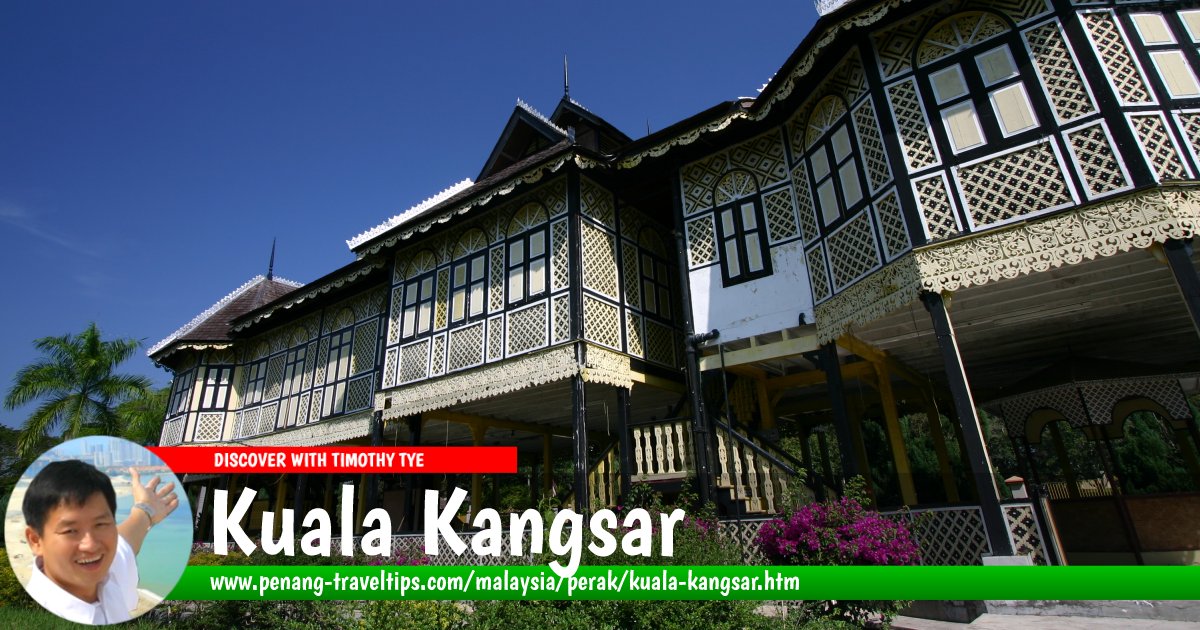 Kuala Kangsar, Perak, with Timothy Tye (31 January, 2006)
Kuala Kangsar, Perak, with Timothy Tye (31 January, 2006)
B. Melayu
Kuala Kangsar (GPS: 4.77352, 100.94169) is the Royal Town of the Sultanate of Perak, Malaysia. As a tourist destination, it is best known as the site of Ubudiah Mosque, arguably one of the most beautiful mosques in the country. Kuala Kangsar is located where the Perak River makes a sharp bend. Located on the western bank of the Perak River, at the confluence with Sungai Kangsar, Kuala Kangsar is a beautifully preserved town that is worth exploring, especially for heritage enthusiasts. Within Kuala Kangsar are some of the most charming palaces and mosques in Malaysia.
Map of Kuala Kangsar
Places of Interest in Kuala Kangsar
- Al-Ghufran Perak Royal Mausoleum (GPS: 4.7646, 100.95052)

- Arena Kuala Kangsar (GPS: 4.77414, 100.94368)

- Dataran Sungai Perak Indah (GPS: 4.77313, 100.94433)

- Iskandar Bridge (GPS: 4.81831, 100.9639)

- Istana Iskandariah (GPS: 4.76211, 100.95454)

- Istana Kenangan / Kuala Kangsar Royal Museum (GPS: 4.76024, 100.95577)

- Jeti Dataran Sungai Perak Indah (GPS: 4.77295, 100.94426)

- Istana Ulu (GPS: 4.76665, 100.9479)

- Kuala Kangsar Clock Tower (GPS: 4.77212, 100.94214)

- Malay College Kuala Kangsar (GPS: 4.77595, 100.93856)

- Oldest Rubber Tree of Malaya (GPS: 4.77451, 100.94097)

- Masjid Ridzuaniah (GPS: 4.77504, 100.94018)

- Pavilion Square Tower (GPS: 4.77442, 100.93905)

- Sayong (GPS: 6.435766, 100.190755)

- Sultan Abdul Jalil Bridge (GPS: 4.77871, 100.94598)

- Taman Bandar (GPS: 4.77393, 100.94414)

- Ubudiah Mosque (GPS: 4.7642, 100.9509)

- Victoria Bridge (GPS: 4.83709, 100.9622)

Streets in Kuala Kangsar
Categories of sights in Kuala Kangsar
Getting there Kuala Kangsar
By CarThe most practical way to reach Kuala Kangsar is by car. Exit the North-South Expressway (E1) at Exit 143.
By Train
The KTM Electric Train Service makes a stop at Kuala Kangsar Railway Station at 12:05 pm from Kuala Lumpur, and at 6:40 pm from Butterworth.
Nearby towns and villages to Kuala Kangsar
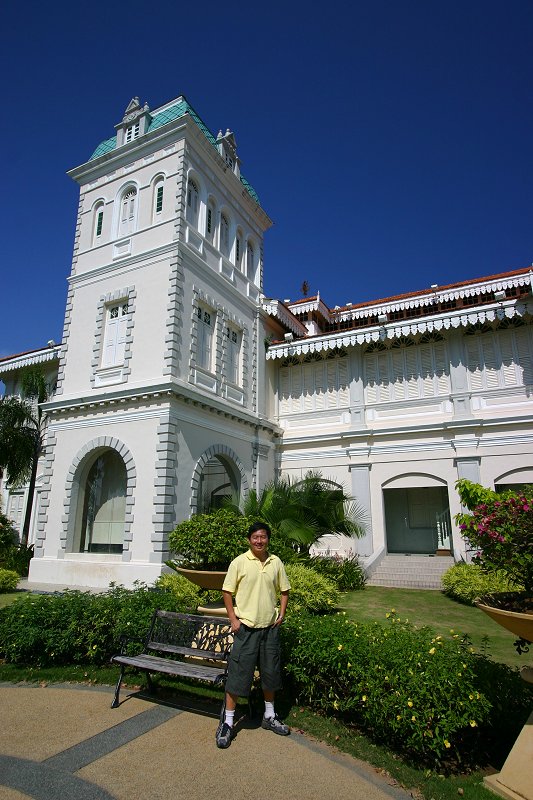
Here I am at Istana Ulu, Kuala Kangsar (31 January, 2006)

History of Kuala Kangsar
The name Kuala Kangsar is believed to have come from "Kuala Karong-Sa", which means "99 tributaries", referring to the tributaries that empty into the Perak River. Along the bend of the river, Sultan Yusuf Sharifuddin Mudzaffar Shah (1877-1887) erected his palace, Istana Sri Sayong. This was a strange decision, as the palace was exposed to enemy invasion as well as the unpredictable river.Even though an invasion did not materialize, its vulnerability to the elements proved to be its undoing when, the Big Flood or Air Bah of 1926 almost swept it away. Only then was a decision made to move the palace to higher ground. The site chosen was a gentle knoll close-by, on which today stands the present residence of the Sultan of Perak, the Istana Iskandariah, a fine piece of Art-Deco architecture.
The royal quarters, which include Istana Iskandariah, Istana Ulu, the Ubudiah Mosque and Istana Kenangan, all stand on one side of Kuala Kangsar, on a knoll called Bukit Chandan away from the rest of town, and separated by a large park along the riverbank called Dataran Sungai Perak.
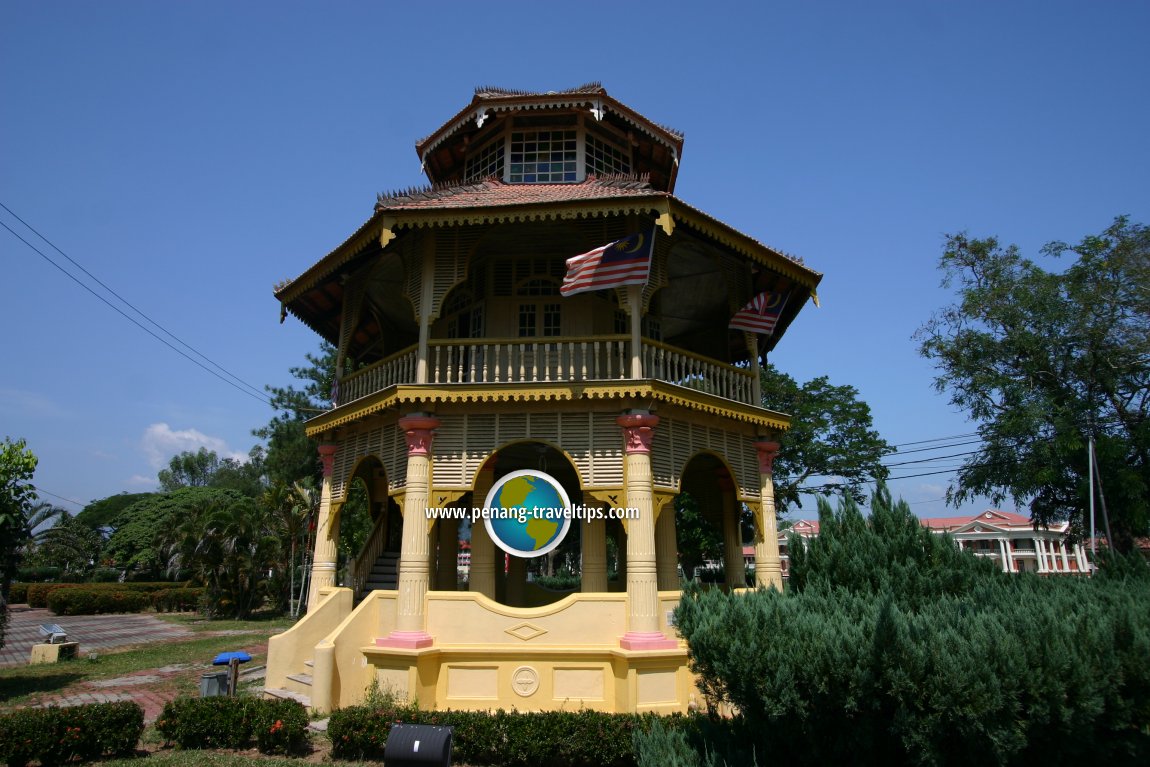 Pavilion Square Tower, Kuala Kangsar (31 January 2006)
Pavilion Square Tower, Kuala Kangsar (31 January 2006)
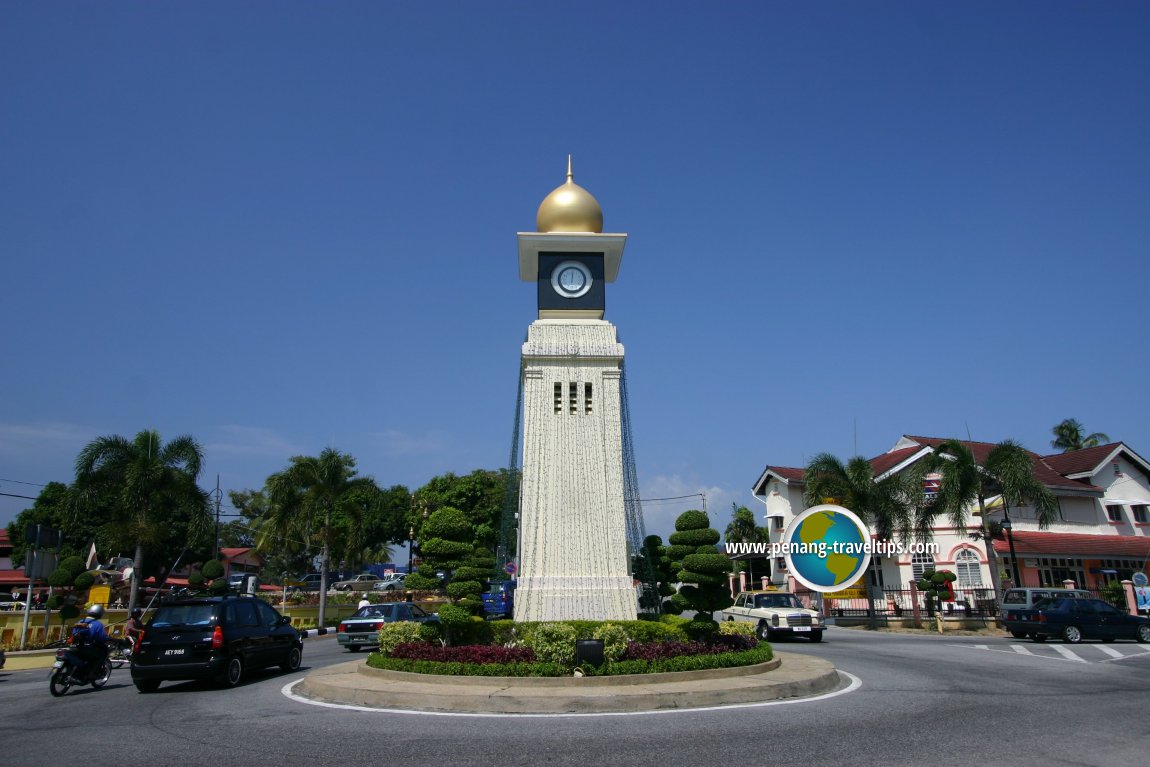 Kuala Kangsar Clock Tower, Kuala Kangsar (31 January 2006)
Kuala Kangsar Clock Tower, Kuala Kangsar (31 January 2006)
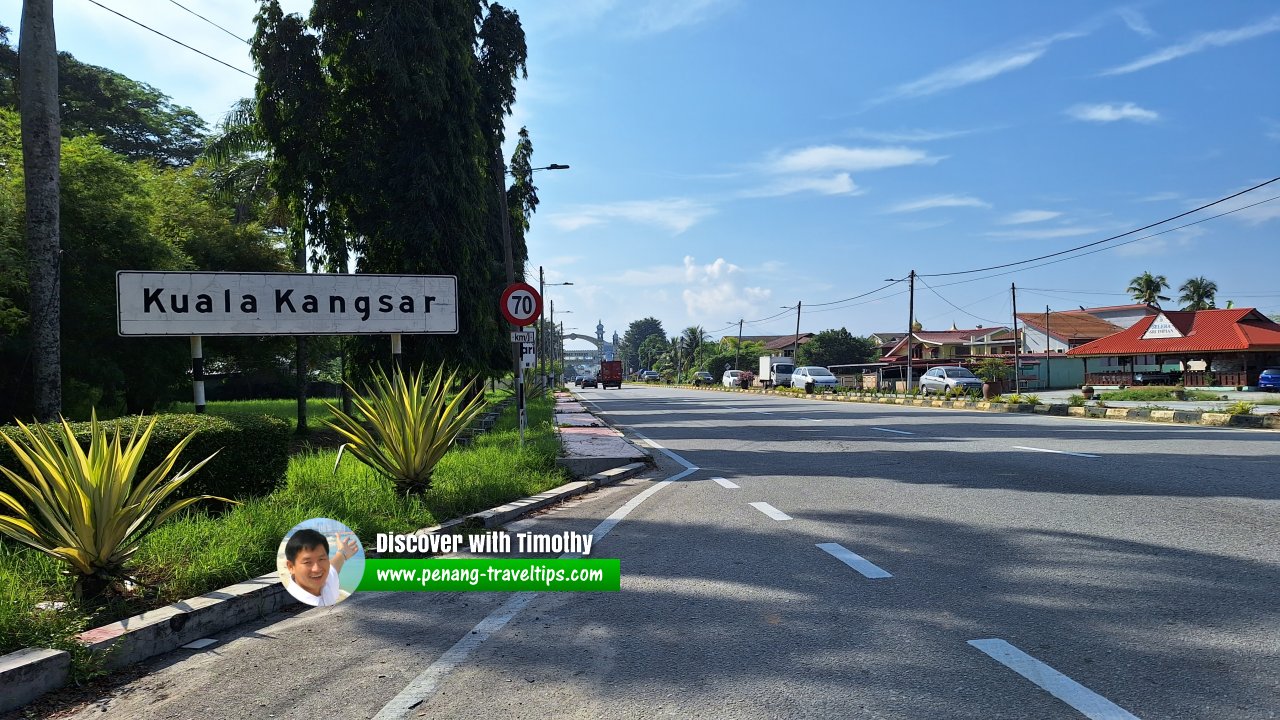 Kuala Kangsar signboard (24 July 2023)
Kuala Kangsar signboard (24 July 2023)
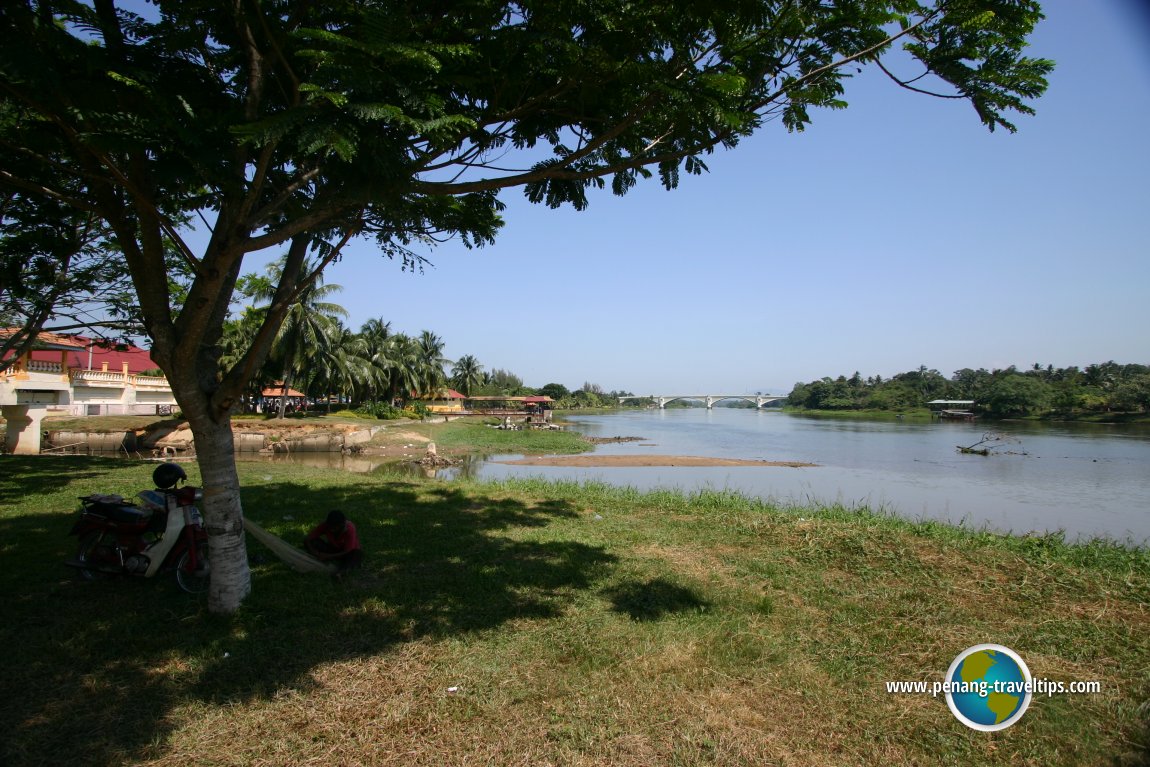 Confluence of Sungai Kangsar with Sungai Perak (31 January, 2006)
Confluence of Sungai Kangsar with Sungai Perak (31 January, 2006)
Chronology of Kuala Kangsar Architectural Heritage
The following are dates associated with the major landmarks in Kuala Kangsar:1877 - First Rubber Tree in Malaya was planted.
1903 - Istana Ulu was built.
1905 - Kuala Kangsar Malay College opened.
1917 - Ubudiah Mosque was built.
1926 - Istana Iskandariah and Istana Kenangan were built.
1930 - Pavilion Square Tower was built.
Near to Kuala Kangsar, across the Perak River, is the village of Sayong which is famous for its water gourds.
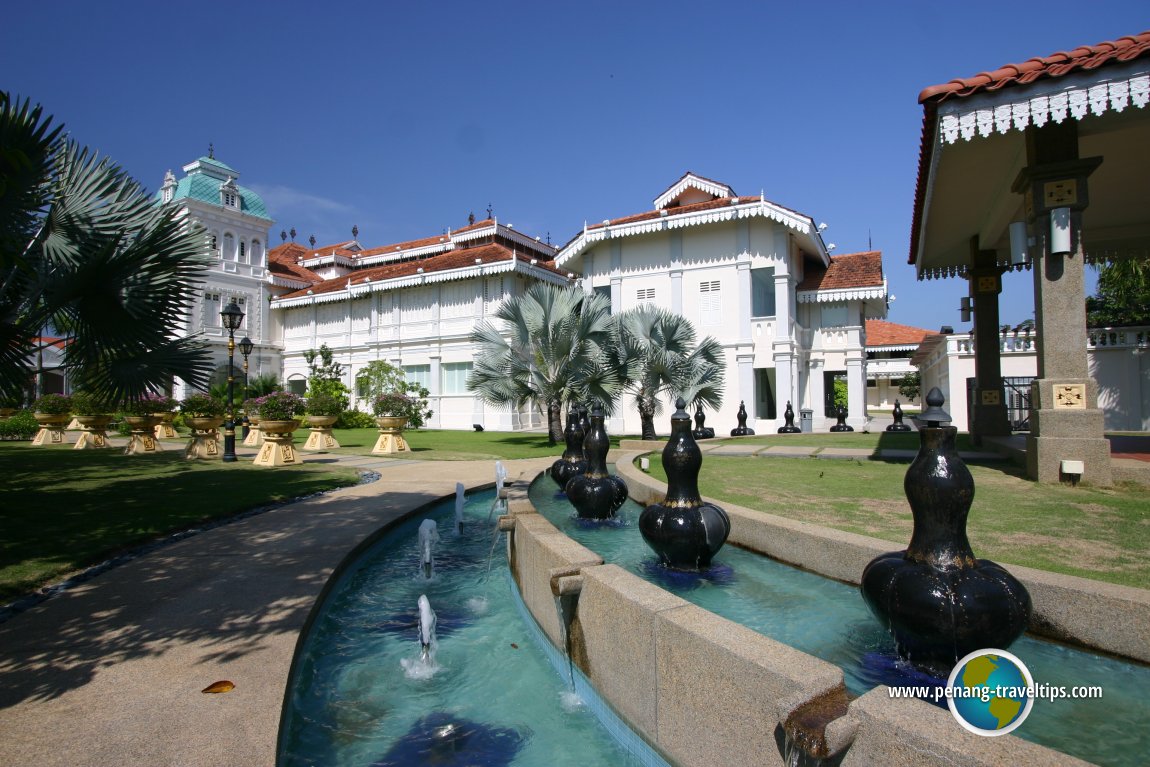 Labu Sayong fountain at Istana Ulu, Kuala Kangsar (31 January, 2006)
Labu Sayong fountain at Istana Ulu, Kuala Kangsar (31 January, 2006)
Kuala Kangsar is  on the Map of towns in Perak
on the Map of towns in Perak
Kuala Kangsar on Google Maps Street View
The famed Ubudiah Mosque in Kuala KangsarBack to Perak mainpage; list of Towns in Perak and Towns in Malaysia
 Latest updates on Penang Travel Tips
Latest updates on Penang Travel Tips

Copyright © 2003-2025 Timothy Tye. All Rights Reserved.

 Go Back
Go Back